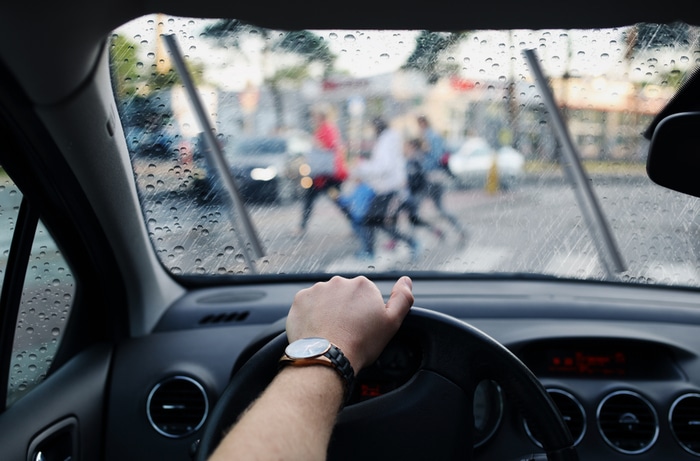Baltimore Pedestrian Hit-and-Run Accidents

Many victims in Baltimore pedestrian hit-and-run accidents must deal with injuries, residual trauma, and feelings of helplessness. The injuries and residual trauma are difficult enough to deal with. In addition, not knowing if you will recover damages from the person who caused your accident can worsen your situation.
Do not lose hope in the aftermath of your hit-and-run accident. You can still do something about that seemingly dire situation with the help of a Baltimore pedestrian accident lawyer.
Find out more about pedestrian hit-and-run accidents and what actions you can take as a victim by continuing with the rest of this article.
What Exactly Is a Pedestrian?
The term pedestrian refers to people traveling from one location to another on foot. Notably, you do not necessarily need to walk or run to your destination to qualify as a pedestrian. For example, people who use wheelchairs are also pedestrians—the same for people who get around using foot-powered scooters, rollerblades, and skateboards.
A cyclist may also qualify as a pedestrian based on location. For example, if the cyclist is on the road, then Maryland law regards them as vehicles. On the other hand, if a cyclist is on the sidewalk, they are a pedestrian.
Pedestrians have the right-of-way when they are using both marked and unmarked crosswalks. Any motorist who does not yield and hits a pedestrian will face serious consequences. Their penalties only get worse if they flee the scene of the accident.
How to Identify a Hit-and-Run Driver
Recovering damages from the driver who struck you and fled from the scene would be ideal. However, do not give up on finding them. There are steps you can take to track your assailant down.
Call the Police
Start the process of searching for your assailant by calling the police. Ask them to head to the scene of the accident immediately so they can open an investigation.
Collect Evidence at the Scene of the Accident
You may be in rough shape following the collision. However, if you feel well enough to walk around, you can speak to witnesses who saw what happened. They may be able to identify the car.
Hire a Lawyer
Next up, you need to hire an experienced lawyer. Your legal representative can help with the investigation and buy you more time to recover. In addition, their assistance will be critical in tracking down your assailant.
Check with Local Establishments near the Scene of Your Accident
Do not forget to check with the establishments near the scene of your accident. They may have security footage of your incident, featuring enough details to identify the driver. Your attorney can coordinate with the nearby establishments to gather this video evidence if the police officers have not already.
CCTV Footage as Evidence
CCTV footage is one of the most valuable pieces of evidence in identifying a hit-and-run driver. If the accident happened in a location with surveillance cameras, your attorney can request the footage from local law enforcement.
The CCTV footage may show a clear view of the vehicle, as well as the driver’s face. This evidence can help identify the hit-and-run driver and hold them accountable for their actions. Due to the technical capabilities of city cameras, CCTV cannot generally provide license plate identification.
Can I Still Be Compensated if the Driver Left the Scene?
The driver responsible for your accident may have kept going upon realizing what happened. They already know they are in big trouble and decided to go on the run indefinitely.
Finding your assailant in that scenario will be a great challenge. The search may take a long time as well. With no end to the search in sight, you may be wondering how you will receive compensation for the accident.
If you cannot find your assailant, you can turn to your insurer for financial aid.
Draft a claim with your lawyer and send it to your auto insurance provider. File an uninsured motorist claim and use that payout to cover your medical bills. Let your lawyer handle the conversation with your insurer as they understand how to negotiate these claims successfully.
But what if you do not have auto insurance? In that case, you can request financial aid from the Uninsured Division of Maryland Auto. The Uninsured Division of Maryland Auto Insurance can offer up to $30,000 in financial assistance per accident for the victim.
Proving the Extent of Your Accident-Related Injuries
Whether seeking compensation from your insurer or requesting aid from the Uninsured Division of Maryland Auto, you must provide evidence of your injuries. Otherwise, they will deny your claim.
To prove your injuries, you must submit some important documents.
First, you need a copy of the police report. This police report should detail the circumstances of your hit-and-run accident. You can ask your lawyer to retrieve this document from the police.
You should also collect your medical records and bills. Send these documents to your insurer or the Uninsured Division of Maryland Auto Insurance to prove that you are requesting a reasonable amount of financial aid.
Taking photos of your injuries is also recommended. Those photos will back up the doctor’s notes in your medical records.
Lastly, you should provide an affidavit detailing your hit-and-run accident. Without the affidavit, neither your insurer nor the Uninsured Division of Maryland Auto may offer the compensation you seek.
Maryland Laws and Determining Fault in Maryland Pedestrian Accidents
Who is to blame for the pedestrian accident? To answer that question, you need to consider Maryland’s right-of-way laws.
As we noted earlier, pedestrians have the right-of-way if they are using a marked or unmarked crosswalk. After seeing the pedestrian at the crosswalk, the driver must yield and allow them to cross before moving again. If the driver does not yield, the blame for the accident will be squarely on them.
In certain situations, the obligation to yield the right-of-way falls on the pedestrian. For example, a pedestrian must yield if they are crossing the street anywhere other than the provided crosswalk. According to Maryland law, pedestrians must also let the vehicles pass first if they are crossing the road, even though an overhead crossing or tunnel is nearby.
Because Maryland still uses the rule of contributory negligence, you can miss out on compensation for your accident if the defendant successfully argues that you should share the blame for what happened. You can disprove their claims by showing that you followed all relevant laws while crossing the street.
Work closely with an attorney to share your side properly during your appearance in court.
Experienced Pedestrian Accident Attorney
Attorney John Leppler’s experience when it comes to handling pedestrian accident cases is second to none. You can rest assured that he will exhaust every option available to track down your hit-and-run assailant and hold them responsible for their reckless actions.
Reach out to us at Leppler Injury Law today and secure John’s services for your pedestrian hit-and-run accident case!
